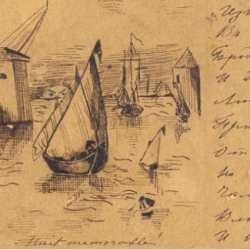As you place your awareness in the heart, don't worry about whether your heart feels soft or open. One of the purposes of prayer is to help you move deeper into the heart. So start from where you are.
Stage 1: Invoking through Praise or Gratitude. Spend a moment or two setting the stage with a prayer of invocation, praise, or an offering of gratitude. You can take one from a traditional prayer, or make one up on the spot. The invocation can be as simple as "God, my maker and source," or "I offer my salutations to the Buddhas and Bodhisattvas." Or you can deeply contemplate the qualities of Universal Presence, of Consciousness, of God, and 'name' the ones that arise for you at this moment. The more personal you can make your prayers, the better.
Stage 2: Confession. Acknowledge your interior truth for this moment. "I'm longing for connection," or "I'm having a really tough day," or (this is my favorite) "I'm stuck and need some guidance," or "I saw something in myself that I'm not happy about."
Stage 3: Plug In. After that, take a moment to 'plug in,' to connect to the heart, or simply to feel your aspiration for connection.
Stage 4: Make a Request. Once you sense connection—even a little connection—make your request. The real secret of petitionary prayer lies in making sure you ask from a place of connection. With practice, you'll learn to recognize those moments when you're plugged in, and those moments when you're not. You'll also discover that the more you work with prayer, the easier it becomes to plug in.
Make your request clearly, without shame. Don't be afraid to mix up 'great' requests with small personal ones. Just make sure that you stay connected. And when you've completed your request, say thank you.
Stage 5: Let Go. Take a couple of minutes to let go of the words, let go of the 'wanting,' and allow yourself to simply be present in the feeling state that has arisen. Whatever it is. This is the moment when you open yourself to intimacy with Presence, Essence, Spirit—when your feeling of being separate and disconnected can melt. Christian contemplatives call this 'communion.' For me, getting to this point is sometimes like tuning a radio: you move the dial this way and that, until there's a moment when the band clicks in, and you're suddenly getting reception. You 'know' that your communication has gotten through. You've been, in some way, met.
A friend told me, "This moment of connection is what makes me feel my prayer has been 'answered.' I reach a certain intensity of feeling, and that's the fruit of the prayer." In other words, at this point there's not really any question of praying 'for' anything. You're simply resting in prayer, as you might rest 'in' meditation, or rest in asana.
Deep Prayer. At this point, if you let yourself sit for a while, you may find yourself segueing into what I call deep prayer, prayer as immersion in the sacred, prayer as silence. At this level, you stop striving, and enter a state where words merge into feeling.
All the spoken forms of prayer—negotiation or petition, praise, and confession—can lead you to that inner state of connection. The secret is to be willing and ready to go there, to track the signals that it's time to let go of words, and let yourself be in stillness.





